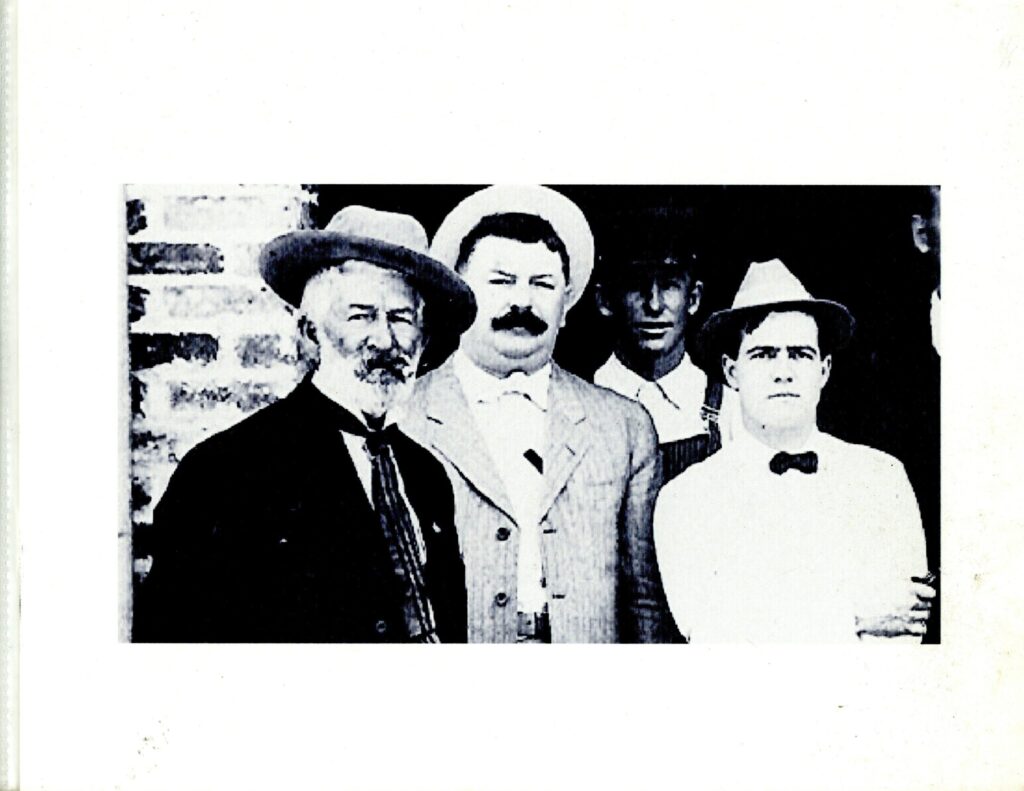The following story is excerpted from ‘Heading for the Hills: A Trip up the Mineral King Wagon Road in the Late Eighteen-Nineties’, written by Alice Crowley Jackson (1894–1969). In the manuscript, Alice retells a story that her mother, Emma Gilliam Crowley (1858–1917), told. The story takes place in about 1880 and features Erastus “Ras” Fenton Warner (1842–1928). Ras was a well borer who came to Tulare County in 1858. At the time of the story, Ras would have been about thirty-seven years old. He stood five feet, ten inches tall, with dark hair, blue eyes, and a deep tan. Although we have no definitive evidence that Ras was in Mineral King at that time, it is likely Ras and his long-term business partner, Edwin Little Van Valer (1849–1894), were boring holes and laying pipe for the Empire Gold and Silver Mining Company. Edwin claimed the Silver Mountain 3S with his father Peter (1832–1917) in 1879. The Van Valers owned or co-owned five mine claims and a mill site claim in Mineral King. Ras’s brother Frederick Appleton “Fred” (1855–1910) claimed the Black Chief Discovery in 1880. The last reported sighting of a grizzly in this area roamed both Giant Forest and the outskirts of Three Rivers. It was last seen in 1925.
The Last Grizzly Ever Seen in Mineral King
By Alice Crowley Jackson
You know, when Harry Parole discovered Mineral King there were many animals there. Some have disappeared. There were many mountain sheep. They are gone. There were timber wolves. They are almost gone. There were wolverines. They are gone. There were grizzly bear, and they are gone.
At the time of this story, the Empire mining boom was well under way. The dynamiting on the claims had frightened away all the grizzlies except one. This old fellow had found Timber Gap a good place to live. The dynamite blasts bothered him, but the garbage left from Tom Fowler’s Empire Hotel was not far away. It allayed his fear of the noise. He could not resist the temptation of good food and plenty of it.

Ras Warner worked at the Empire Mine. He tired of the beef and mutton diet the hotel provided, so [he] decided to quit work one day and go over Timber Gap into deer country, hoping to bring back venison.
He was riding along peaceful like, with one leg over the horn of his saddle, singing at the top of his voice. His horse suddenly reared, throwing Ras right in front of that old grizzly standing seven feet high.
What could Ras do? The horse had bolted with his rifle. He couldn’t shoot. He couldn’t run. He couldn’t duck. There he was, right smack-dab in front of the old fellow, so close he could have touched him. Yes, what could Ras do? Well, he did it! He closed his eyes so tight he almost didn’t ever get them opened again. Grabbing his hat off his head with one hand and his bandana from his neck with the other, he began waving them with all his might and main, jumping as high as his legs would go, yelling and bellowing like a mad bull.
That grizzly actually turned pale and was so scared he couldn’t get his front legs down to the ground. When he did, he made a bee line in the opposite direction, not stopping for trees or boulders or anything in his way. He tore the earth apart as he went, scooping out a deep canyon into which boulders as big as cabins rolled and rumbled. That old grizzly completely disappeared. Neither hide nor hair was ever seen of him again in our mountains
Jackson, A. Date unknown. ‘Heading for the Hills: A Trip up the Mineral King Wagon Road in the Late Eighteen-Nineties’. Exeter, CA: Mineral King Preservation Society. Publication date unknown.
